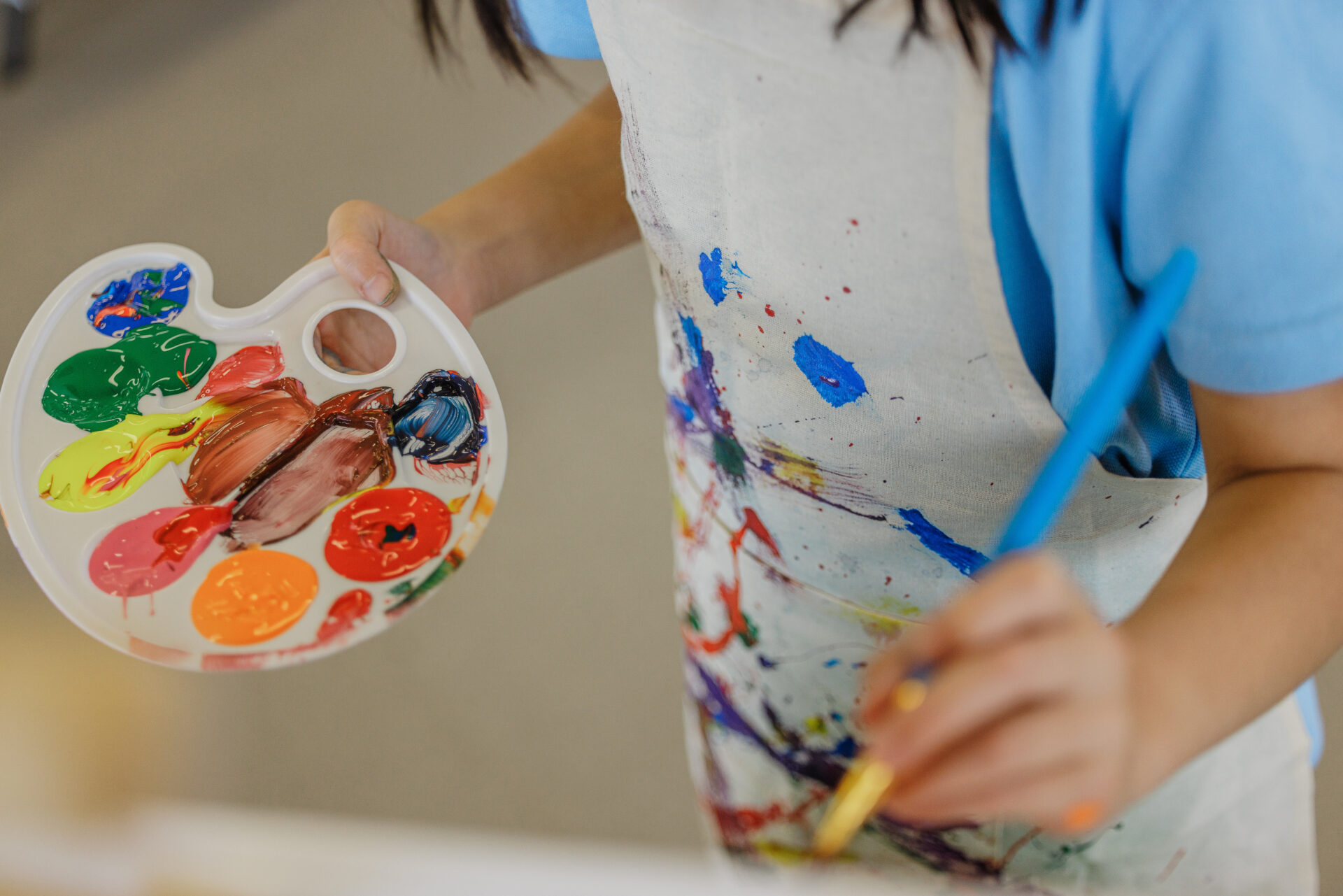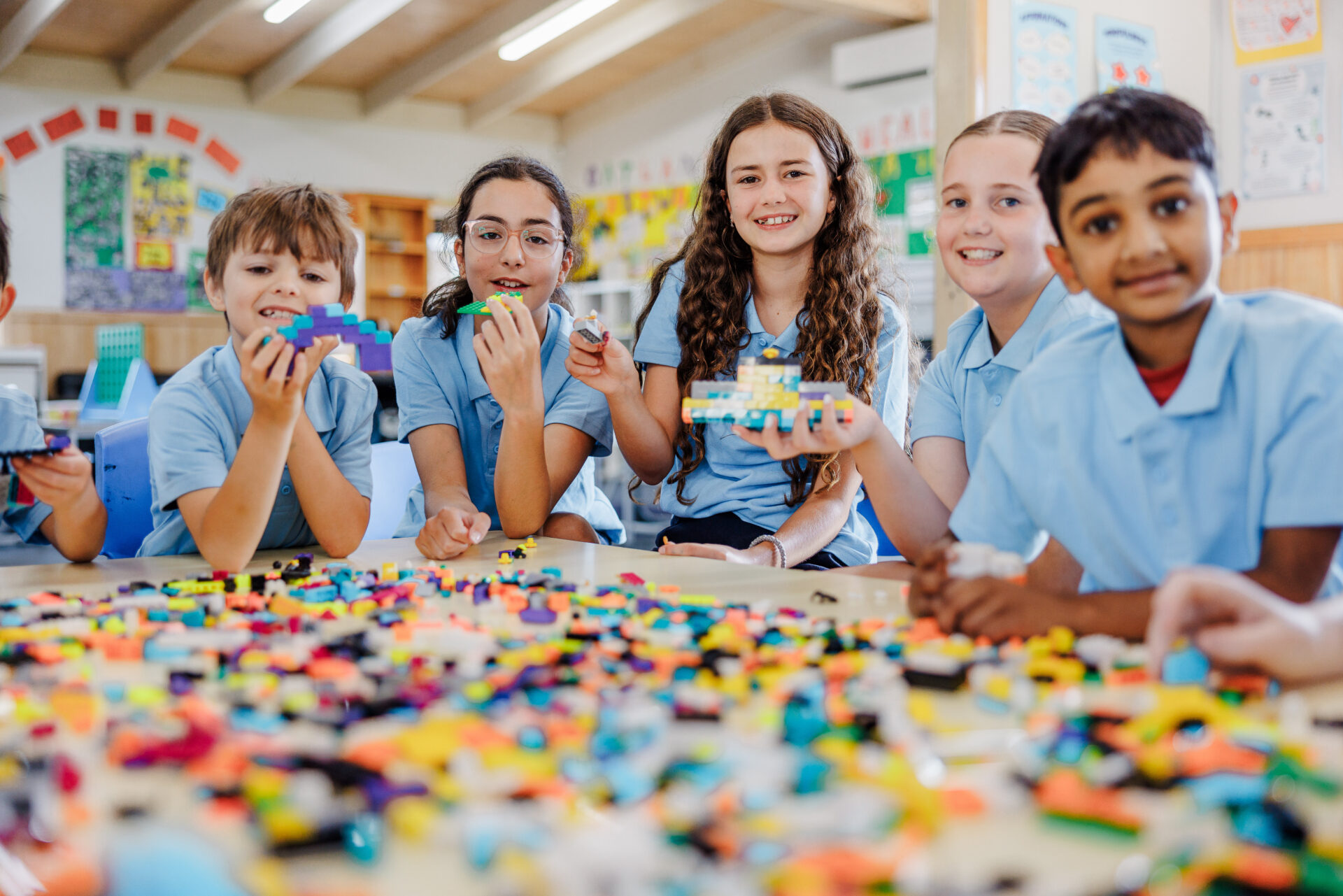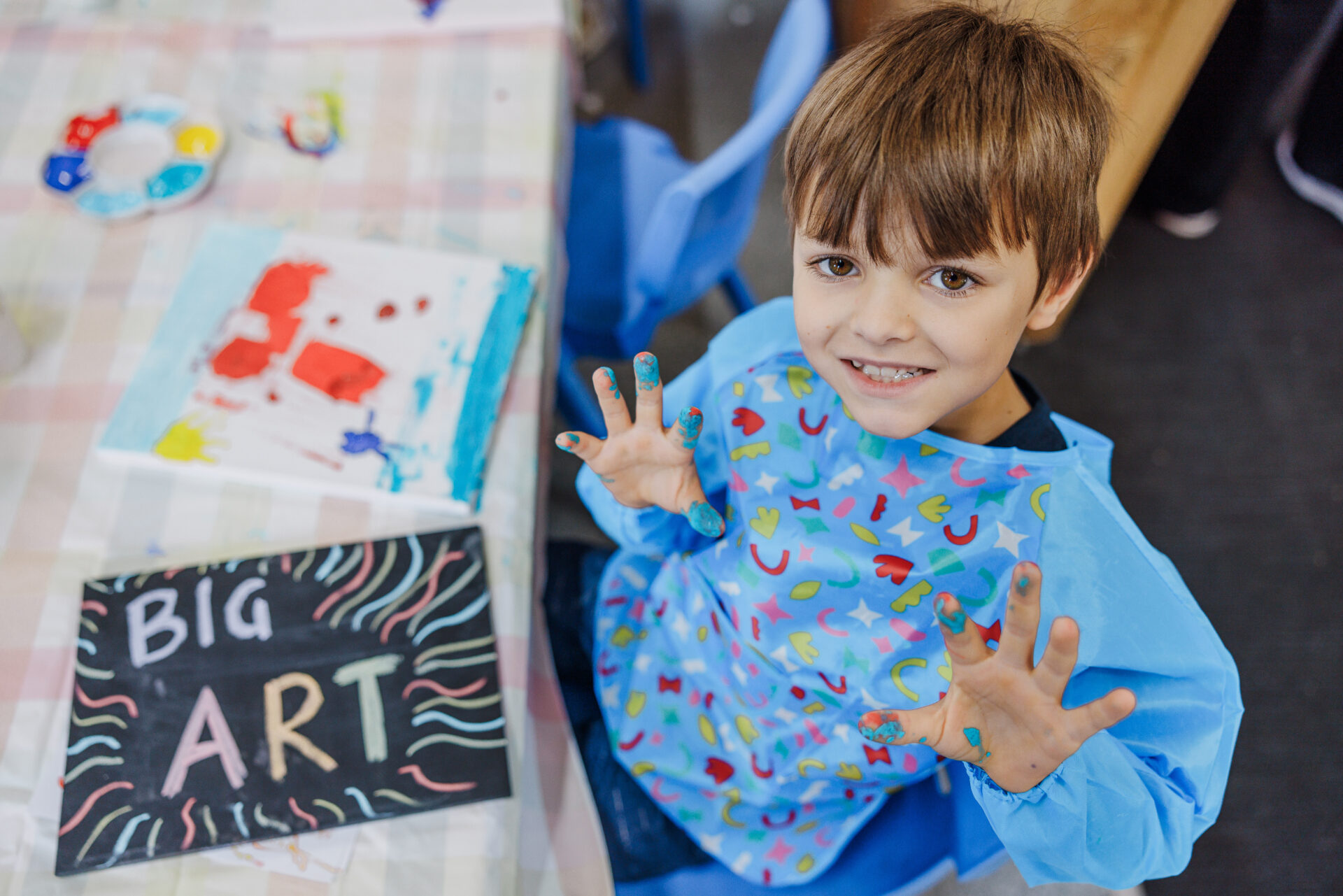Embracing the Spring Holidays with Art, Nature and Family Connection
Spring is upon us and with it brings the end of term 3 and the school holidays, creating a mix of excitement and anxiety for many parents. While kids look forward to a break from their routines, parents often face the challenge of keeping the kids entertained and engaged. But fear not! As a professional artist and a parent, I’ve discovered that the magic of spring can provide endless inspiration for creative projects that not only keep boredom at bay but also, like many creative projects provide mindfulness, create lasting memories, and provide opportunities to strengthen family bonds.
There’s something about the renewal of spring that brings out the artist in all of us. Nature blooms with colours, textures, and shapes that are perfect for artistic exploration. By using nature as our canvas and our toolkit, we can create beautiful art while teaching our children to appreciate the world around them. You will often find me and my kids foraging around in nature looking for materials to create art projects all year round, but spring is when all the flowers burst to life so colour is abundant! In this blog, I’ll share inspiration for these school holidays and how to use nature to incorporate some arty fun so here are three fun, nature-inspired art projects that are perfect for kids of all ages. These projects can also evolve over the course of the holidays, providing opportunities for discovery, creativity, and family connection so let’s encourage some digital detoxing and slow things down a bit for them and for ourselves!
1. Nature Mandala Creation: A Mindful Art Project for All Ages

A mandala is a geometric configuration of symbols, and in various spiritual traditions, it represents the universe. Creating nature mandalas can be a wonderfully calming and meditative experience, making it a perfect activity for the spring holidays and it can be adapted in detail to suit all ages.
What You will Need:
- A collection of natural items (leaves, flowers, twigs, stones, seeds, etc.)
- A flat surface (garden, park, or even your living room floor with a blanket or mat)
How to Create Your Nature Mandala:
Start with a nature walk to collect your materials. Encourage your children to pick items that catch their eye. This walk is a fantastic way to connect with nature, practice mindfulness, and teach your kids to notice the small details around them. Once you’ve gathered enough items, find a comfortable spot to start your mandala. This could be at a local park, in your backyard, or even inside on a blanket on the floor. Begin by placing one of your collected items in the center. Then, work outward in circular patterns, adding different items as you go. There are no rules—just enjoy the process and watch as your mandala grows. As you create, talk about the patterns you see and the choices you’re making. This is a great way to encourage creativity and conversation. Once the mandala is complete, take a moment to admire it and reflect on the process.
Mindfulness Tip: Encourage your kids to focus on their breathing and the act of placing each item. This can turn the activity into a mindful practice, helping to calm the mind and focus attention.
Memory-Making Idea: Take photos of your mandalas to create a “Mandala Diary.” You could do this every day of the holiday, watching how the designs change and grow more intricate over time. At the end of the week, compile the photos into a small scrapbook or a digital slideshow.
2. Leaf Print Painting

Leaf print painting is a brilliant way to explore the textures and patterns of nature while allowing kids to experiment with colours and composition. This project is ideal for a sunny spring afternoon and can be done with kids of all ages. It’s also fun to create family member characters out of the leaves!
What You’ll Need:
- Leaves of various shapes and sizes
- Non-toxic paint (tempera or acrylic)
- Paintbrushes or sponges
- Paper or canvas
- Paper plate or pallet
- Pencil or black pen
- A flat surface and an old sheet or newspapers/tablecloth to protect it
How to Make Leaf Prints:
Head outside to collect leaves of all shapes and sizes. Discuss the different types of leaves, can you name the trees and plants they come from, and why they might have different textures and edges. This step is a great opportunity to learn more about the plants in your local area.
Lay down an old sheet or newspaper or tablecloth to protect your workspace. Get your paints ready in a palette or you can even use a paper plate.
Use a paintbrush or sponge to apply a thin layer of paint to the underside of a leaf. Try not to use too much paint, the veins and textures will transfer more clearly with a thin, even coat. Gently press the painted side of the leaf onto your paper or canvas, pressing down on all areas to ensure the paint transfers. Carefully lift the leaf to reveal your print. Continue this process with different leaves and colours. Encourage your kids to layer the prints, overlap colours, or even create a specific scene or pattern. We like to add extra detail once the paint dries with a black pen or grey lead pencil. We make ‘our family’ out of leaf print, including the cat shadow!
Mindfulness Tip: Focus on the sensations—how the paint feels, the sound of the leaf pressing onto the paper, the reveal of the print. Encouraging kids to describe these sensations helps ground them in the moment.
Memory-Making Idea: Once your prints have dried, frame them or create a collage. Older kids might enjoy writing a short story or poem inspired by their artwork to accompany the final piece.
3. A 2 Week-Long Nature Journal: Documenting Spring Through Art and Writing
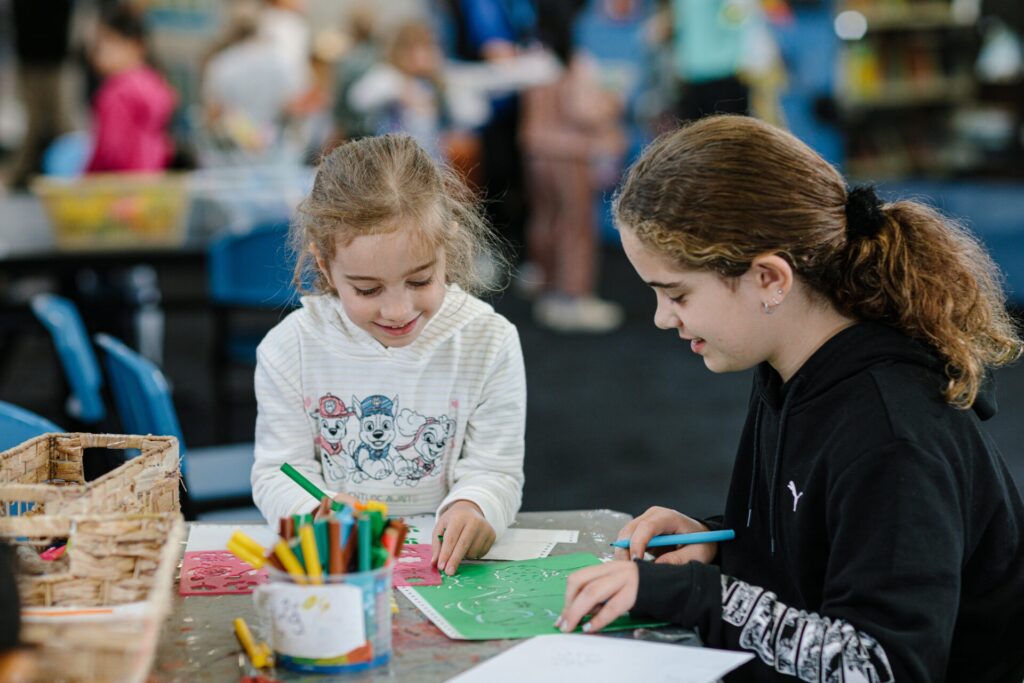
A nature journal is a project that grows over time, allowing for daily creative expression and observation. This activity encourages children to notice the changes in nature throughout the week and provides a beautiful keepsake to look back on.
What You’ll Need:
- A blank journal or sketchbook
- Pencils, pens, colored pencils, or watercolor paints
- Glue or tape
- Collected nature items (flowers, leaves, feathers, etc.)
How to Create a Nature Journal: Take a step back and unplug
Daily Nature Walks: each day take a walk in a local park, garden, beach, anywhere outdoors. Encourage your children to observe their surroundings closely and collect small, interesting items to add to their journal. This part of the process is about unwinding and if you can, try to spark a little gratitude, whether it be from the walk itself, from nature, spending time together or from the treasures you have found.
Sketch and Write: After each walk, take some time to sit down with your journal. Have your kids sketch something they saw—a flower, a bird, a unique tree shape—or write a short poem or story about their experience. Encourage them to use different materials each day—pencils one day, watercolors the next.
Press and Preserve: Use glue or tape to add small natural items to the pages. You can press flowers or leaves between pages of a heavy book to dry them before adding them to the journal.
Reflect on Changes: As the weeks progress, encourage your children to notice how things change from day to day. Are there more flowers blooming? Did the tree start to bud? Documenting these changes encourages a sense of wonder and connection with the natural world. Spring is a beautiful time to start a nature journal with new life happening all around us.
Mindfulness Tip: Use the journaling time to practice gratitude. Ask your kids to write down one thing they’re thankful for each day or something they noticed that made them happy.
Memory-Making Idea: At the end of the week, sit down together and go through the journals. Talk about your favorite moments, the most interesting discoveries, and how each day felt different. This reflection not only strengthens family bonds but also reinforces the value of mindfulness and observation.
Creating Art and Memories That Last
These art projects are more than just a way to fill time—they are a chance to create lasting memories, deepen family connections, and instill a sense of appreciation for the beauty of nature in your children. By engaging in these activities, you are not only helping your kids express themselves creatively but also teaching them to see the world through an artist’s eyes.
Spring is a season of renewal and growth, both in nature and within ourselves. By taking the time to explore and create together, you’re giving your family the gift of shared experiences and a deeper connection to the world around you. So, grab your art supplies, put on some comfortable shoes, and head outside. The world is your canvas—let’s create something beautiful together!
Happy creating, and here’s to a spring holiday filled with joy, creativity, and connection!
-Written by Kerry Evitts
Kerry Evitts
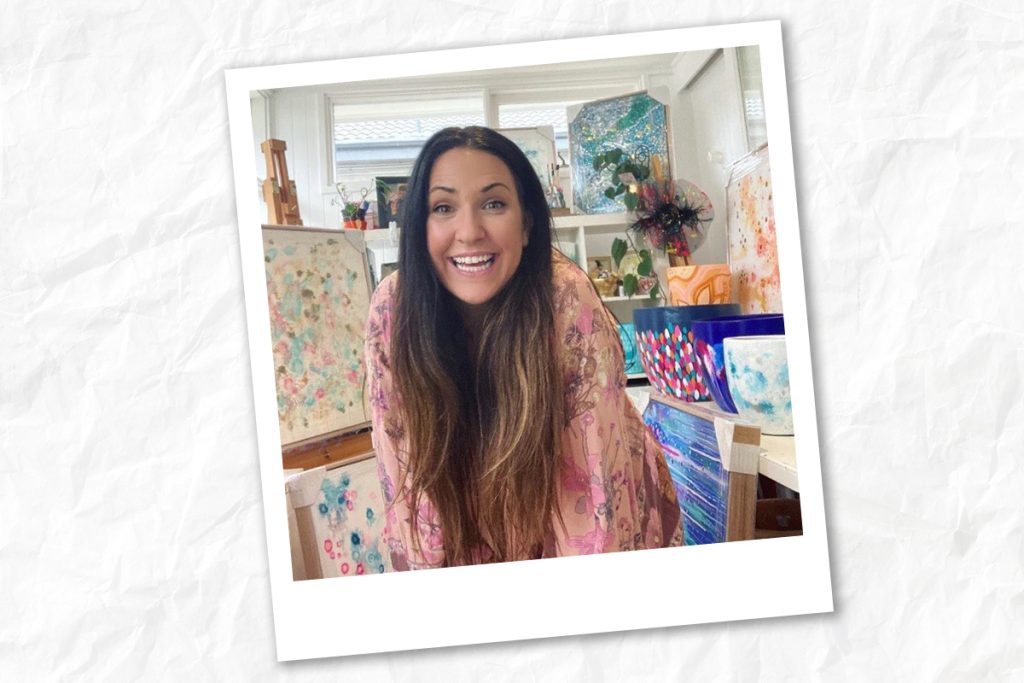
Kerry is one of our key partners undertaking the judging of our Big Art Comp! Kerry is a British-born, Melbourne-based painter, psychotherapist and mum of three. She has a vibrant art studio in Melbourne where you’ll find her running group art activities to being up on a ladder painting murals!
As we celebrate 30 years of Camp Australia, we invite you to join us in looking back at our journey and imagining the future through the eyes of our young artists in the Big Art Comp.


